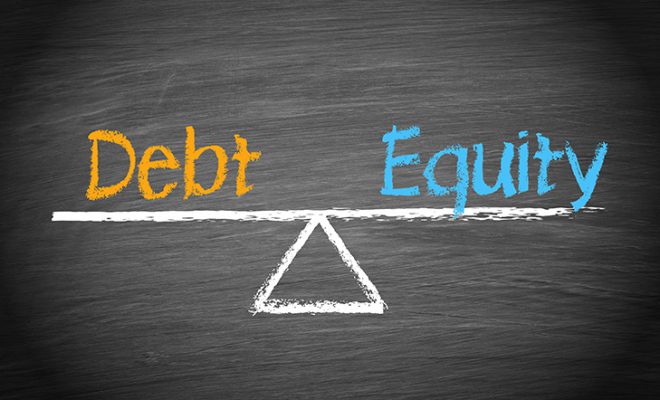9 Mistakes to Avoid While Making a Large Portfolio Withdrawal
The common investor has innumerable investment and retirement options to choose from. With growing awareness of planning finances, more individuals are now concerned about how to spend, plan and save every penny. However, even when individuals successfully save and execute their plans, they have little to no idea on how to deal with a large portfolio withdrawal. When people see positive profits on their assets, they may get tempted to take them out as soon as they are earned. Many new investors assume that if they do not transfer their short-term earnings into their bank account before their fund’s/asset’s performance inevitably deteriorates, they will lose the opportunity to profit. However, this may be an unwise move. Instead of withdrawing those earnings, one can reinvest them and generate more money. If you require guidance on how to grow and manage your portfolio in line with your future financial goals, consult with a professional financial advisor for the same.
Read on to know when you may consider a withdrawal from your portfolio, and what you should keep in mind when doing so:
When can you make a withdrawal from your portfolio?
Though it is recommended not to disturb your portfolio by making large withdrawals, some unexpected circumstances may push you to do so. When it comes to financial success, knowing when to sell/hold/withdraw your portfolio is crucial. Whether you should sell or hold, however, is largely determined by several factors – for instance – If you’re approaching (or have reached) the withdrawal age limit or you have attained your investment objective and more. However, there are only two good reasons to withdraw:
- An unforeseen emergency.
- You’ve succeeded in achieving a specified objective.
If you’re thinking about making a substantial withdrawal and need to plan an exit strategy, there are three things you should consider – how much money you will require, when you will require it, and lastly, how you are going to make the money last.
If you do choose to withdraw a significant amount, here are a few mistakes to keep note of and avoid while doing so:
9 mistakes to avoid while making a large portfolio withdrawal
Making mistakes is an inevitable part of the investing process. Analyzing your mistakes and how to avoid them will aid your withdrawal process. Below are the most typical mistakes people make when handling a significant portfolio withdrawal, and how you may avoid them.
Mistake 1. Ignoring the value of your portfolio and market conditions
Withdrawal rates have been the subject of some of the most important research over the last decade. It makes sense to withdraw less when the markets and portfolios are down and potentially more when the markets and their portfolios are up.
You can also link your withdrawal rate to the performance of your portfolio rather than as a constant dollar amount adjusted for inflation year after year. Although this technique appears tempting on the surface, it may result in more drastic swings in spends than many would prefer. By adopting a pre-set percentage rate as a baseline and setting a “ceiling” and “floor” for withdrawals, a more comfortable middle ground can be found.
Mistake 2. Withdrawing from all your investments at once
This can arguably be the biggest mistake you could be committing. Not only will you completely derail your financial planning, but will also lose all profits and interests earned. Also, selling significant assets in a single calendar year, rather than spreading them out over two or more years, raises your total taxable income and may push you into a higher tax band.
Start by calculating how much money you’ll need and when you’ll need it, then work backward to reduce your tax burden. Tactics, such as tax-gain harvesting can help reduce the tax impact.
Mistake 3. Avoiding a loss on a sale
In the face of emergencies, most investors fail to make logical decisions. They get prepared to sell assets that may be performing well or undervalued assets, which in the future can fetch a fortune.
When you make a large withdrawal, it can be beneficial to rebalance your portfolio. Your asset allocation may fluctuate from its goal due to market moods and other factors, causing certain positions to become heavier compared to others. You have to keenly analyze all assets to avoid a loss on sale.
Mistake 4. Not diversifying your portfolio
An investment can be used for a variety of purposes, including saving for retirement, paying student/home loans, etc. In that sense, diversification can be your best bet to save and grow your corpus.
Now, if you wish to make a large withdrawal, you’d have several options to choose from. For instance, if you want to pay a small debt, you need not dilute your stock holdings entirely; rather, you can sell another financial instrument, which is more liquid, to address the concern. Having diversified assets is important in the context of large withdrawal as one need not unnecessarily dilute assets and derail their finances.
Mistake 5. Following a plan that only works on paper
Another disadvantage of using a fixed-dollar withdrawal strategy is that it won’t account for the fact that your actual expenses are likely to vary from year to year. This is especially true if the sustainability of your plan is based on a fixed annual dollar amount that’s too low. Discretionary expenses like travel or new car purchases and unplanned outlays like home repairs, or medical expenses can throw your planned withdrawal rate off track no matter how well you plan.
If you base your projected spending on your basic monthly outflow alone—groceries, utilities, etc., and don’t account for unanticipated expenses, your real spending rate will likely exceed your planned outlay. In other words, a withdrawal plan that appeared to be viable on paper may not be.
Mistake 6. Not accounting for taxes
The money you’ve put down in tax-advantaged retirement accounts may appear to be quite substantial. But, when calculating your take-home pay from such accounts, it’s crucial to consider the impact of taxes. For instance, a 4% withdrawal from an $800,000 portfolio is $32,000, which is probably close to your spending demands but assuming a 24% tax rate, that amount shrinks to just over $24,000!
Hence, it’s better to be conservative with your planning and to assume a higher tax rate to be on the safer side.
Mistake 7. Failing to seek help from a professional
Seeking a second opinion on large withdrawals is ideal as you may want to make sure that you have considered all possibilities and aren’t being overly aggressive or conservative in your assumptions.
A professional financial advisor can explain to you in detail the impact of your withdrawals, your options, and if there is a way out without touching your portfolio.
Mistake 8. Delaying your withdrawals
If you delay in taking your withdrawals, it can cause a ripple effect leading to a series of smaller errors, all of which can add up to a significant financial loss. For instance, most individuals often withdraw their Social Security benefits as soon as they reach 62 years of age, which prevents them from getting a bigger Social Security check and thus, maximizing it. Moreover, this means they delay taking large portfolio withdrawals from other accounts. Doing so may put you into a higher tax bracket at the time of actual withdrawal.
Mistake 9. Not being consistent when it comes to saving and investing
Although some people begin putting away money from a young age, they make the mistake of not committing sufficiently to the large withdrawal objective. The tendency to not invest, take high-interest loans, and spend lavishly when one has fewer priorities is a big reason behind this low commitment. Another reason for underestimating the corpus value is the idea that expenses will suddenly diminish after retirement.
In other words, many individuals lack the serious commitment to building a portfolio that will cater to their retirement needs and one where they can withdraw in case of emergency.
To summarize
The goal of investing is to create a profit and build a savings corpus for a better financial future. However, you may have to make large withdrawals in a tough scenario. This could hamper your retirement goals and may cause a serious dent in your portfolio. However, if you do have to withdraw, keep in mind the mistakes mentioned above and avoid making them. Withdrawing a significant amount of money at once is a major decision that should not be taken lightly. Do consult a professional to oversee all aspects of the same.
Use the free advisor match tool to match with an experienced and certified financial advisor who will be able to guide you effectively on how to avoid making certain mistakes while making a large portfolio withdrawal. Give us basic details about yourself, and Paladin Registry will match you with 1-3 professional financial fiduciaries that may be suited to help you.















